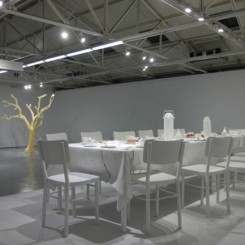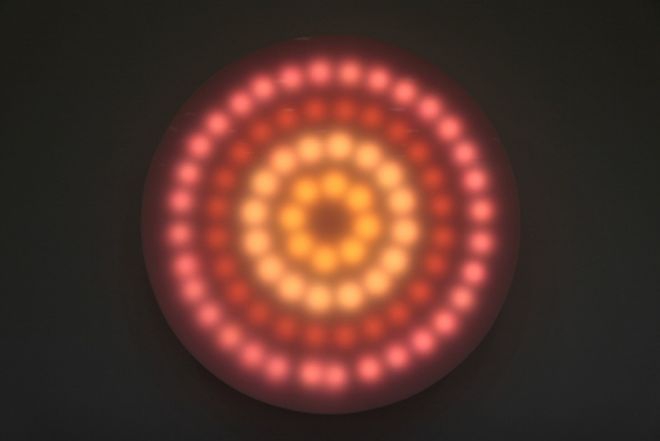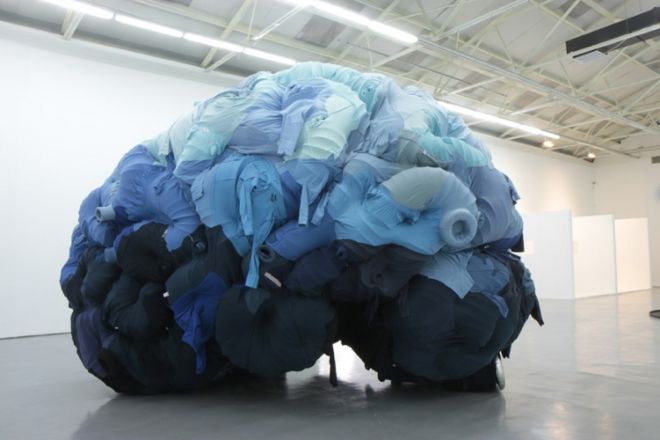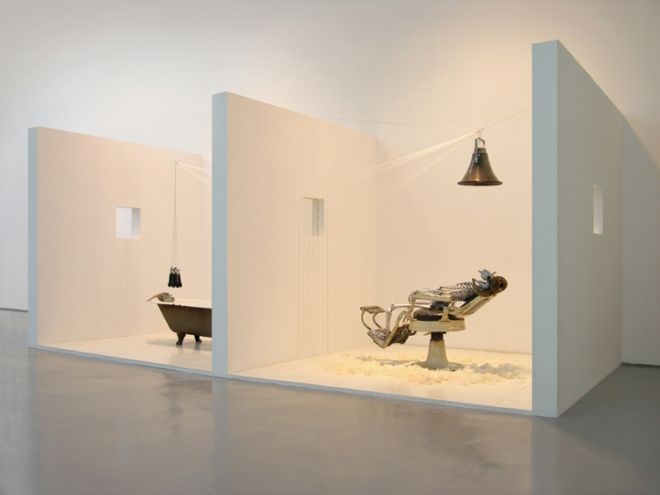“Static Electricity,” solo exhibition by Ma Qiusha.
Beijing Commune (798 Art Factory, 4 Jiuxianqiao Road, Chaoyang, Beijing). Mar 8–Apr 19, 2012.
“Disruptive Desires, Tranquility, and the Loss of Lucidity,” solo exhibition by Huang Ran.
Long March Space (4 Jiuxianqiao Road, Chaoyang, Beijing). Mar 16–Apr 16, 2012.
30, hip, foreign-educated, popular, (primarily) video artists; their first solo exhibitions in March 2012 in two of Beijing’s best contemporary art galleries. Their exhibitions in part with that expansive subject, the everyday, and also the nature of aesthetics and our expectations thereof in the present moment.
The first to open — Ma Qiusha’s “Static Electricity” at Beijing Commune — presented a fresh though somewhat frigid ensemble of works. Where Ma’s previous pieces seemed sometimes to emanate a kind of personal sharpness — a spiky intimacy paired with a girlish aspect (like a kitten with needle-like claws), these newer works are more surgical in character; they are less emotive and more about inevitable or deliberate changes in physical state for substances extracted from the ordinary (liquids and vegetables, for example, are scrutinized and shaped before being re-presented in a gallery). The video element is composed of three screens each showing a condom-encased frozen block — blood, milk and urine. Filmed non-stop for 24 hours then shown in edited time, the blocks deplete gradually before our eyes — should we choose to wait and watch them. On the opposite wall we see a weird spot-lit view from the back of a moving vehicle of replica steaming entrails being chucked away and landing on the receding asphalt; in the background is the sound of a cat growling gleefully. Between these quite ambiguous “cold” and “warm” pieces is the grid-like installation “To S,” wherein the residual aura of compulsion inherent in Qiusha’s work finds a literal realization: the artist spent hours trimming three kinds of vegetables to conform to a standard measurement taken from one example before stacking them all in chest freezers — one each for carrots, cucumbers and yams.
At Long March Space later in the month was Huang Ran’s “Disruptive Desires, Tranquility and the Loss of Lucidity” which showed at this year’s Frieze New York — an absorbing 22-minute video of two very attractive adolescents (they were projected as such, but the actors are clearly older — an initial chip in the crystal) encountering each other in some kind of doctor’s room. The boy sits strangely astride an old carousel horse hanging from the ceiling; the girl stalks around him in a short, girlish dress, provocatively eating chocolates between pillow-lips; the golden wrappers she licks and pastes to the body of the horse, papering it with a Midas skin. The two characters’ voices have been subtracted, leaving only subtitles; the video’s soundtrack involves the sound of pouring rain — a sound which appears to be coming from outside the room. Meanwhile other scenes of eerie nocturnal forests with blue butterflies, water and sunbathed autumnal plants (scenery drawn from the artist’s Sichuan birthplace) are accompanied by bouts of classical music. Huang Ran has remarked that people think art should change society, but it hasn’t. This hothoused narrative in “Disruptive Desires…” bathes our senses and draws us in as if we are standing with them in the room, but invisible. It is a vicarious visual by turns erotic, queasy and dark — and that finally moves away from you. And what have you gained? Do you feel different? There is a certain hollowness that follows one out of the room. In the next, four mysterious cuboid tanks hold combinations of water and oil. Titled “The Weakness of Will and The Fear of Society” the tanks threaten to swill together, besmirching the minimalist tension of their separation.
In the absence of Chinese symbols and in a manner highly controlled, both of these video-focused exhibitions seem to speak of the subsistence of art, its methods and possible offering in the contemporary moment. One might say these are un-generous exhibitions by young artists acutely aware of what they are willing to give and withhold, and what kind of view contributes significantly, to their minds, to aesthetic culture now. The results are stark — but good.



